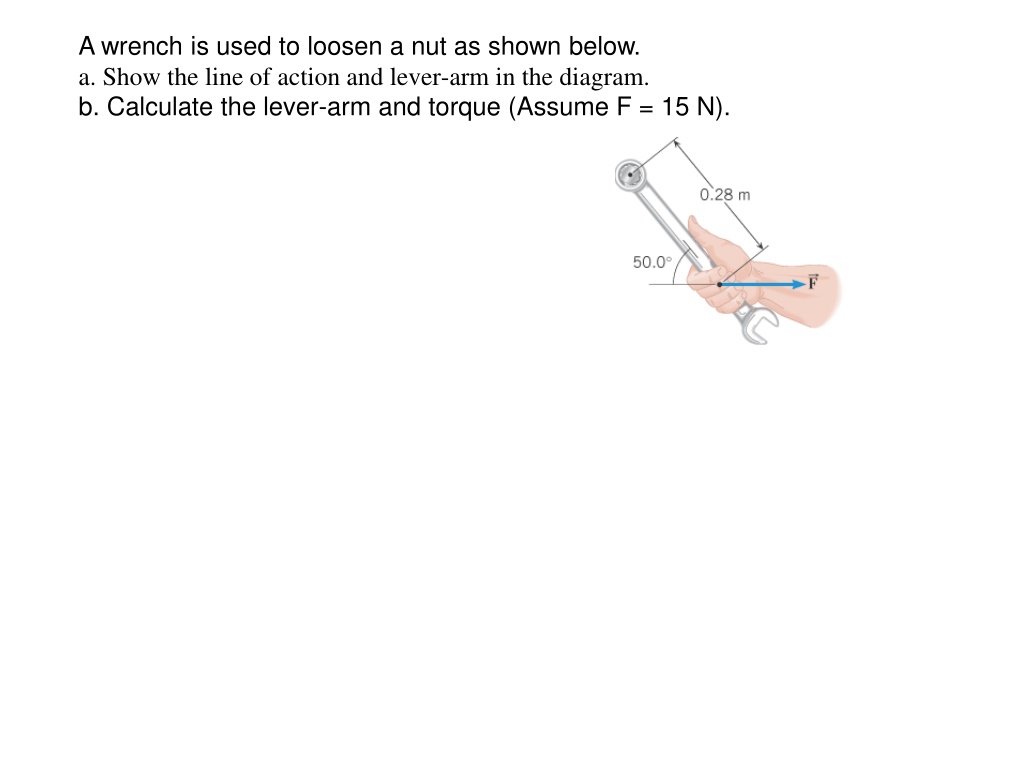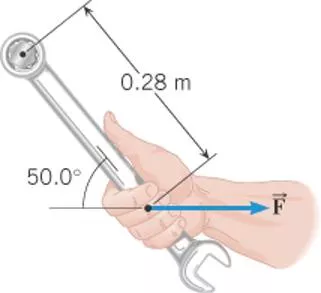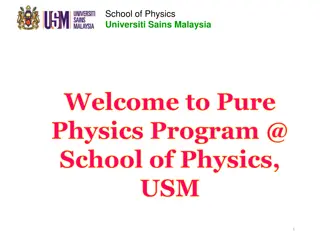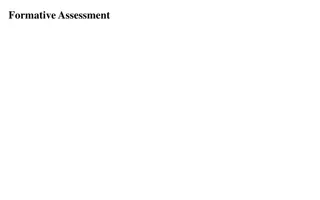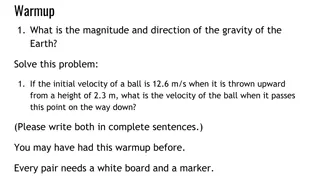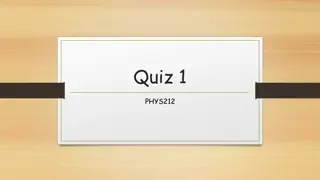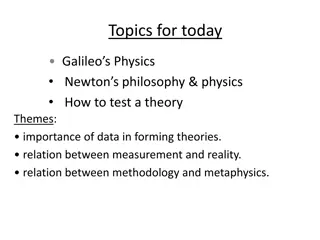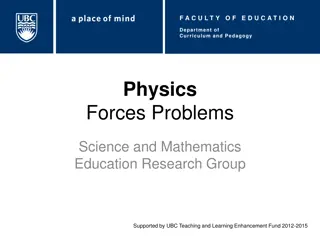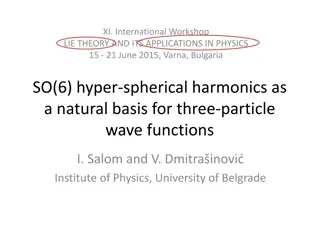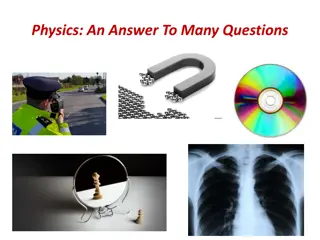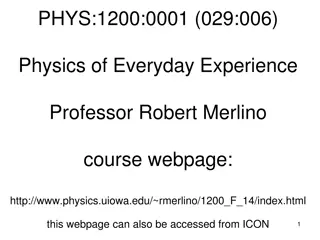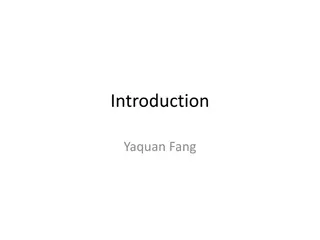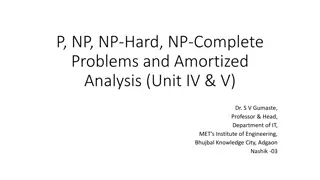Physics Practice Problems and Analysis
In these physics problems, find the line of action and lever-arm of a wrench, calculate torque and angular acceleration of a motorcycle wheel, determine the velocity of a rolling ball using conservation of energy, solve equilibrium problems with balance beams, and analyze the forces exerted during push-ups. Get ready to sharpen your understanding of physics concepts and problem-solving skills with these engaging scenarios.
Download Presentation

Please find below an Image/Link to download the presentation.
The content on the website is provided AS IS for your information and personal use only. It may not be sold, licensed, or shared on other websites without obtaining consent from the author.If you encounter any issues during the download, it is possible that the publisher has removed the file from their server.
You are allowed to download the files provided on this website for personal or commercial use, subject to the condition that they are used lawfully. All files are the property of their respective owners.
The content on the website is provided AS IS for your information and personal use only. It may not be sold, licensed, or shared on other websites without obtaining consent from the author.
E N D
Presentation Transcript
A wrench is used to loosen a nut as shown below. a. Show the line of action and lever-arm in the diagram. b. Calculate the lever-arm and torque (Assume F = 15 N).
15. Consider the 12.0 kg motorcycle wheel shown in Figure 10.38. Assume it to be approximately an annular ring with an inner radius of 0.280 m and an outer radius of 0.330 m. The motorcycle is on its center stand, so that the wheel can spin freely. (a) If the drive chain exerts a force of 2200 N at a radius of 5.00 cm, what is the angular acceleration of the wheel? (b) What is the tangential acceleration of a point on the outer edge of the tire? (c) How long, starting from rest, does it take to reach an angular velocity of 80.0 rad/s?
2. In the figure, a solid 0.2 kg ball rolls smoothly from rest (starting at height H = 5.7 m) until it leaves the horizontal section at the end of the track, at height h = 1.8 m. Use the conservation of energy to find the velocity of the ball as it leaves the end of track?
Equilibrium Problem D. A gymnast with mass 46.0 kg stands on the end of a uniform balance beam as shown below. The beam is 5.00 m long and has a mass of 250 kg (excluding the mass of the two supports). Each support is 0.500 m from its end of the beam. Assume that the forces on the beam due to support 1 and support 2 are vertical. a. Draw a free-body diagram for the beam. b. Write down a force equation by balancing the forces vertically. c. Write down a torque equation by balancing the torques. d. Calculate the forces on the beam due to (a) support 1 and (b) support 2?
The drawing shows a person doing push-ups. Find the force exerted by the floor on each hand and each foot, assuming that the person holds this position.
